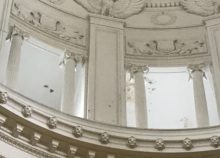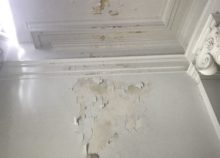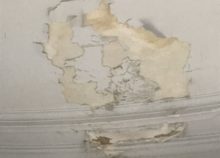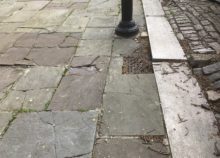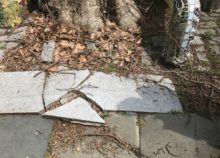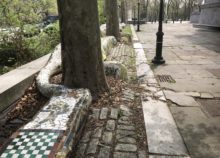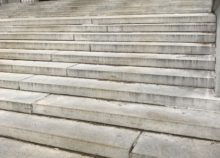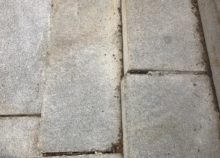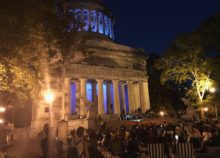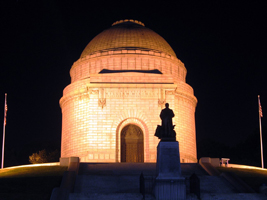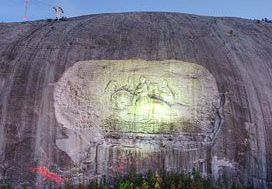Over two decades ago, Grant’s Tomb was rededicated for its centennial following a restoration that occurred because the people’s elected representatives took a stand and reversed a generation of neglect and desecration. But the future of the site depends on eternal vigilance on the part of the general public. Contrary to popular impression, the site today suffers from a number of deficiencies, including a number of naturally recurring maintenance needs and other items that were not addressed in the first place. The following are key issues now facing Grant’s Tomb.
Maintenance Needs
The borders that delineate the national park, i.e., federal property, include only the Tomb proper and a small strip of surrounding (mostly) bluestone space up to the retaining wall. All other land, from the bottom of the Tomb’s staircase to both the south and the north plazas and including the overlook pavilion/visitor facility across the street, is on Riverside Park property owned by the City of New York. This means that while a reasonable definition of the site known as Grant’s Tomb would span several acres, as one would expect to service the largest mausoleum in the Western Hemisphere, the definition of the national park is an artificially cramped .76 acres, making it the twelfth smallest national park in the country, according to the National Parks Conservation Association.
In the Tomb proper, there is visible discoloration and peeling from water damage in the cupola/roof level.
It is unclear whether the water damage this reflects is ongoing, but repair is clearly necessary, as is adequate monitoring to ensure that any such damage be remedied with appropriate repairs before the problem gets worse. Additional discoloration not believed to arise from water damage afflicts the marble floor surrounding the sarcophagi of Ulysses and Julia Grant.
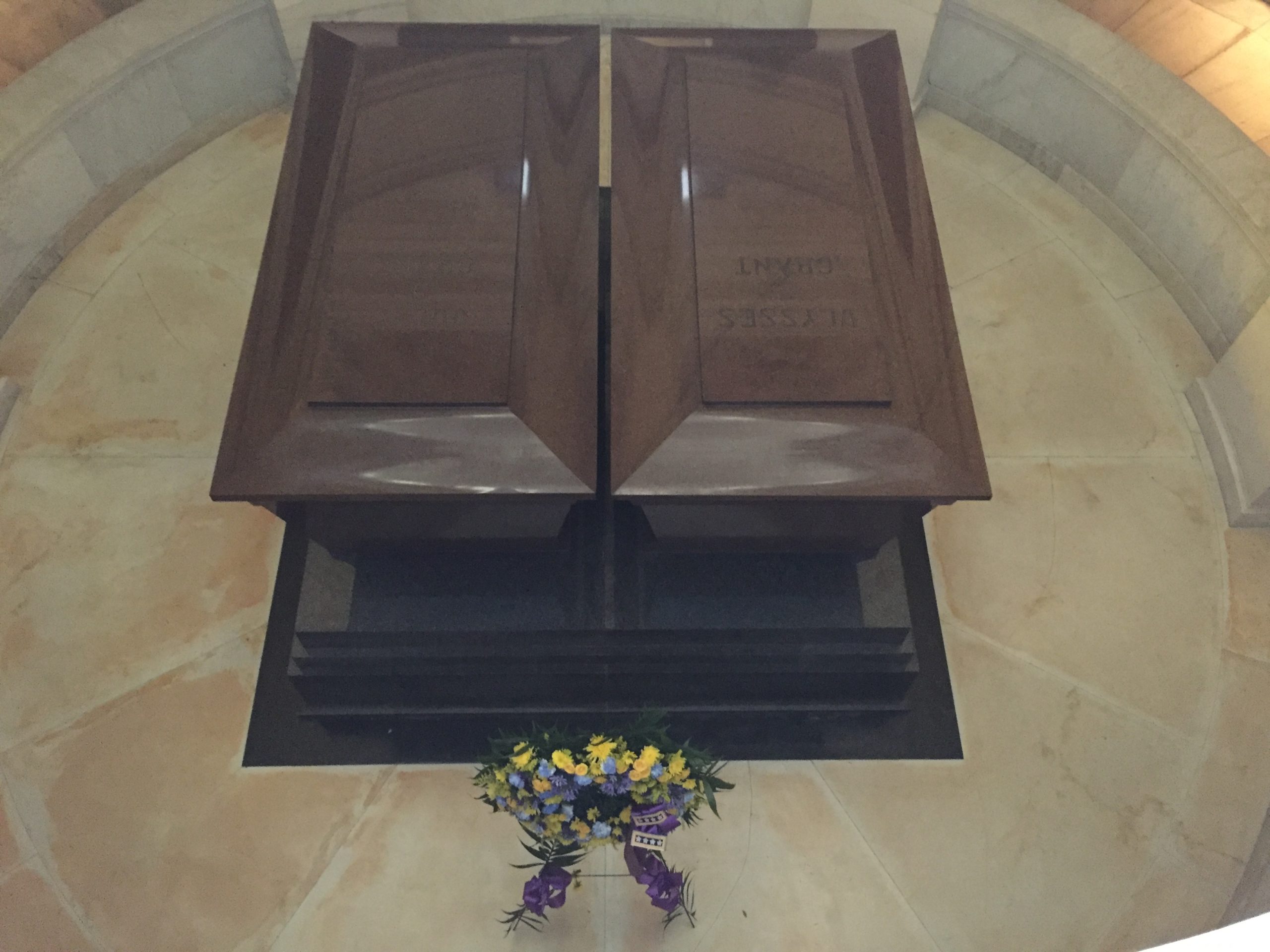
As the National Park Service (NPS) acknowledges in its Project Management Information System (PMIS) proposal describing the need for repairs, the broken, cracked outdoor plaza surrounding the Tomb “has become so deteriorated it has become a safety hazard.” This is visible in the area immediately surrounding the Tomb, which is on federal property.
It is additionally noteworthy that while the GMA advocates the relocation of the architecturally jarring abstract mosaic benches installed in this area in 1972 in violation of the Historic Preservation Act of 1966, the deterioration extends to the benches as well.
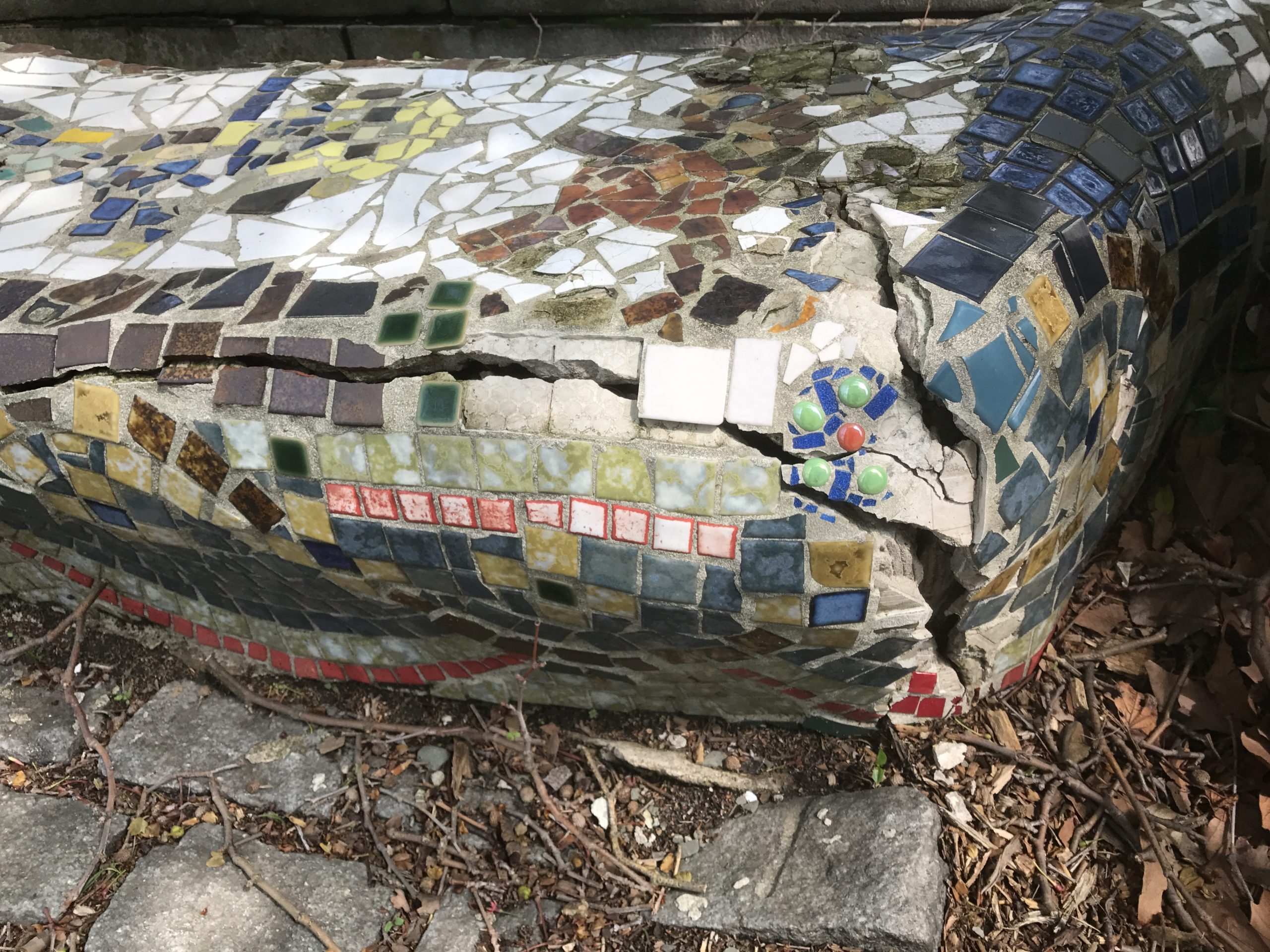
The granite that constitutes the Tomb’s steps and adjoining south plaza, including the two stairways that lead to the sidewalks, also shows some wear.
The broken bluestone pavers need to be repointed and in many instances replaced, as do the granite pavers in similar condition. Although the south plaza is on city property, it notably was Congress that appropriated money for its refurbishment during the 1990s.
The monument’s external nighttime lights were repaired in 2017, but the lighting is basically limited to the inside of the front portico, the lower part of the cupola, and whatever light from the city park lamps dimly illuminates the Tomb.
This lighting should be expanded so that more of the monument could be illuminated, as was the case early in the Tomb’s history.
-
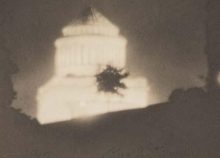
c. 1910
-

c. 1923
The presidential memorials on the National Mall still have brilliant lighting.
-
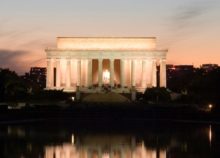
Lincoln Memorial at night
-
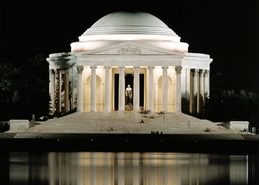
Jefferson Memorial at night
For that matter, such non-federal monuments as the McKinley Memorial in Canton, Ohio, and the Confederate Memorial Carving on Georgia’s Stone Mountain have far better nighttime lighting.
Land Transfer
The plaza north of Grant’s Tomb is an integral part of the site that includes the memorial marking the site of Grant’s temporary tomb. Like the south plaza and overlook pavilion, this property is on city rather than federal park land. This bifurcated land ownership has presented major problems over the years. For decades, the City of New York, which has the responsibility to fund the New York City Department of Parks and Recreation, appropriated almost nothing for the maintenance of its property surrounding Grant’s Tomb. (The south plaza and overlook pavilion were renovated with federal money.) This has changed somewhat in recent years, but it took until 2018, nearly a quarter century after the GMA first called for the north plaza’s restoration, for construction to begin to replace badly deteriorated walkways and an unusable stairway.
-
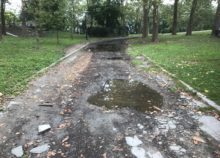
2017
-
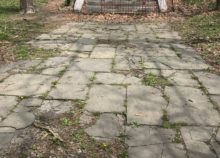
2017
-

2018
-
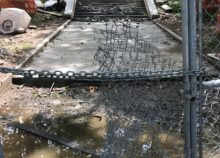
2018
The area around the pavement still requires landscaping to restore grass to the large areas that have become dirt and maintenance to remove leaves and snow as the seasons demand.
Additionally, the black fence that encloses the temporary tomb site is weathered and bent in a distortion of its original shape and needs to be repaired or replaced.
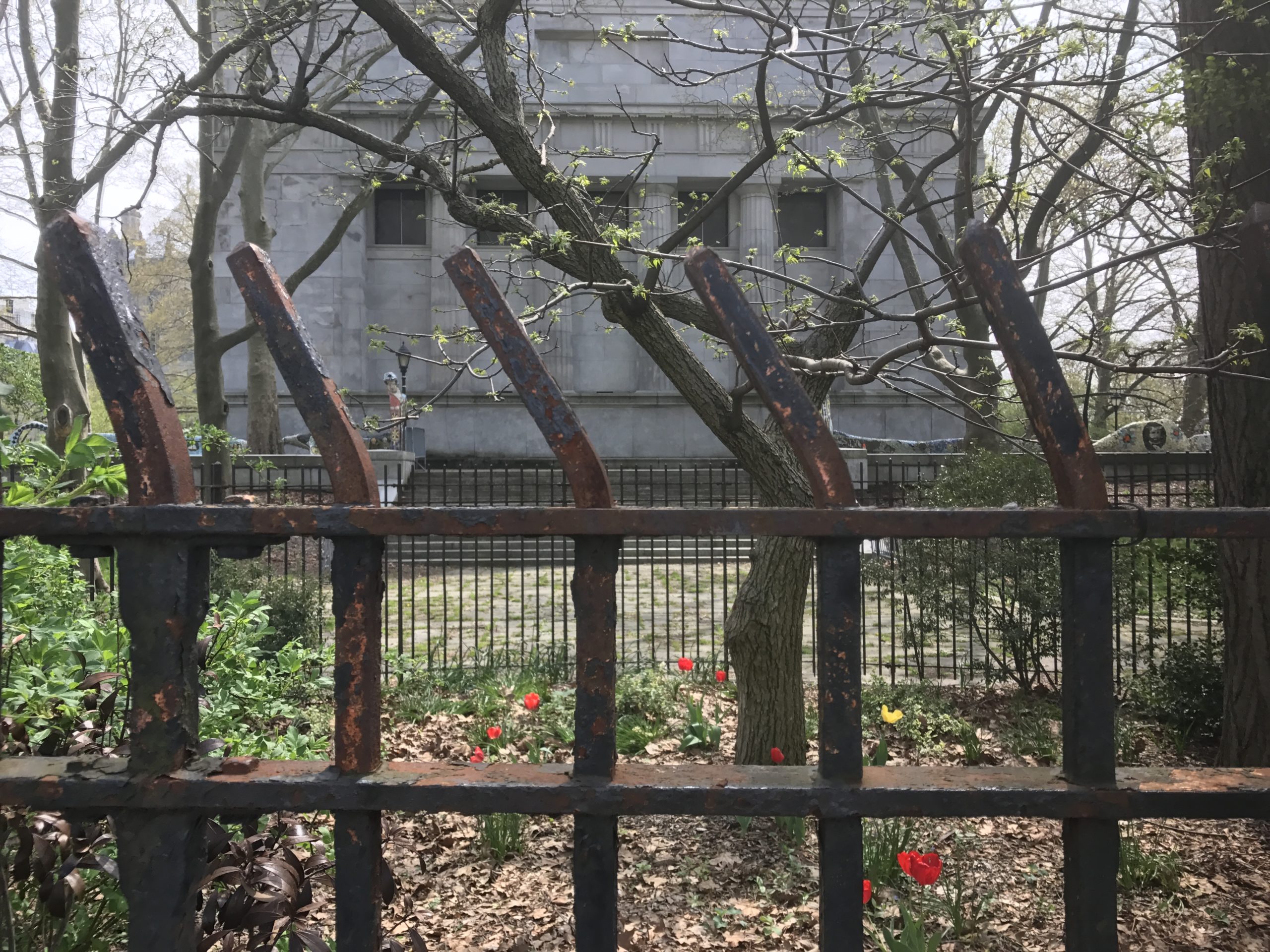
Now as before, no city park rangers are stationed at the site.
Even putting aside the inferior resources New York City devotes to site maintenance, it makes little administrative sense that NPS rangers would service this area and the city-owned but federally renovated overlook pavilion across the street. During the 1990s, legislation proposed in Congress would have remedied much of this problem by expanding the national park boundaries to include the overlook pavilion and roughly the southern half of the “island” of land on which Grant’s Tomb sits enclosed by the northbound and southbound lanes of Riverside Drive, from the north plaza’s temporary tomb memorial area to the stone plaza extending south from the entrance of the monument.

This would have aligned the actual boundaries of the national park with the common sense boundaries of the site associated with Grant’s Tomb. The legislation additionally would have redesignated the monument as Grant’s Tomb, acknowledging the familiar name by which the site was best known from the beginning. Although it appropriated money for a restoration, Congress did not pass this additional legislation, and decades later, that inaction has taken its toll on the site. It is well past time to revive this legislation and transfer the balance of the site from New York City to the NPS.
Improving Facilities
The overlook pavilion across the street from the monument, which once provided public restrooms before being abandoned for over 40 years, reopened in 2011 to accommodate a ranger station, gift shop, and small exhibit space. While that marked an improvement for a site that had not been making use of this space or offering any public restrooms, the combination of budget cuts and the need to staff the property has seriously diminished visitor access to Grant’s Tomb. During the 1990s, when the site underwent a major refurbishment following years of desecration and neglect, its open hours expanded from five to seven days a week. That remedied a deficiency that kept the site closed two days every week, to the consternation of many visitors who had traveled long distances. In recent years, however, budget crunches led to the reversal of this improvement as the Tomb returned to a five-day schedule. The Tomb proper should again be open to the public seven days a week throughout the year and adequately staffed for the entirety of its open hours.
Additionally, the visitor facility falls short on meeting visitor needs. While the space dedicated to the gift shop suffices for that purpose, the remaining space offers only two single-user restrooms, which is inadequate. Large crowds that include sizable tour bus traffic regularly visit the monument.
The remaining visitor space is a multi-purpose room that, despite its modest size, squeezes in 40 chairs, a screen for audio-visual programs, two small display cases containing artifacts, and six small exhibit panels on the wall with text and pictures to illustrate Grant’s life and the history of the Tomb.
Visitors and others among the general public would also be better served by greater access to the NPS’s collection of a vast archive of artifacts relating to the lives of Ulysses and Julia Grant and the history of Grant’s Tomb. These items are currently housed at Fort Wadsworth on Staten Island, a relatively remote location. A number of items have been digitized and made accessible via the NPS’s Manhattan Historic Sites Archive. The same should be done for the majority of items that are not yet available in that format. The archival catalog also should be updated for accuracy, comprehensiveness, and optimal online access.
Prospective New Visitor Center
Visitors to the site should receive more than a cursory introduction to Grant. The NPS should have more space adjoining the Tomb allocated for interactive exhibits in order to leave visitors with an appreciation of Grant’s life and rich legacy, from preserving the Union to fighting for civil rights. Along with expanded restroom facilities, such a facility would serve as a more complete visitor center. Another benefit of a full visitor center is it could remedy the inaccessibility of Grant’s Tomb to the handicapped. Garland Reynolds, chairman of the GMA’s Building Committee, has made preliminary studies about using available underground space on the western side of the monument or constructing a new facility on the northern side of the Tomb, which is not to rule out other options.
The park area immediately behind (to the north) of the existing Grant’s Tomb and temporary tomb site is easily accessible to visitors behind the Tomb and would not require them to cross the street, as they are required to do in order to reach the overlook pavilion. Reynolds’ conceptual architectural study of the northern option envisions a “pavilion in the park” that will echo some of the architectural features of Grant’s Tomb. It would become an integral part of the surrounding park setting and serve as an educational center commemorating Ulysses S. Grant. Visitor restrooms would be included in this facility, as would interactive exhibit areas and administrative offices and support space.
Reynolds’ studies should be examined alongside preliminary studies conducted for the NPS by architect Newton P. Bevin in 1965 to provide an alternative entrance to the crypt level by extending the southwest staircase one level lower and hollowing out a passageway from there. Reynolds recommends adapting Bevin’s study to the installation of an elevator for the handicapped in or near that stairway, noting that recent advances would enable the construction of an adequate elevator that minimizes demands on space.
These studies are merely suggestive and do not purport to be binding plans for the site. The essential element of each proposal is the location of the visitor center. It would not preclude federal acquisition and continued use of the overlook pavilion. In fact, it would envision the most efficient allocation of administrative and visitor space between the pavilion and a new facility.
Summary of Proposals
These proposals can be summarized as follows, categorized by whether they call for federal appropriations to support the NPS’s existing statutory mandate or for authorizing legislation.
Appropriations measures
- Repair the discoloration and peeling from water damage in the cupola/roof level, along with any associated waterproofing deficiencies, and establish ongoing monitoring to prevent further damage.
- Remedy the discoloration of the marble floor surrounding the sarcophagi of Ulysses and Julia Grant.
- Repair the broken, cracked outdoor plaza surrounding the Tomb, including repointing and, where necessary, replacement of bluestone pavers, granite pavers, the monument’s steps, and the adjoining south plaza and two stairways.
- Ongoing maintenance of the stone plaza and stairway north of the Tomb, as well as repair or replacement of the black fence surrounding the temporary tomb site.
- Installation of enhanced outdoor lighting to better illuminate the monument at night.
- Expansion of the park boundaries to include the overlook pavilion and roughly the southern half of the “island” of land on which Grant’s Tomb sits enclosed by the northbound and southbound lanes of Riverside Drive, from the area behind the north plaza’s temporary tomb memorial area to the stone plaza extending south from the entrance of the monument.
- Expand the open hours of the site to seven days a week throughout the year, and ensure that staffing is adequate to provide the public access to the Tomb proper during all open hours.
- Digitize and make accessible to the public all items in the NPS’s General Grant National Memorial archives. Update the archival catalog for accuracy, comprehensiveness, and optimal online access.
Authorizing measures:
- Redesignate the monument as Grant’s Tomb National Monument.
- Authorize the creation of an expanded visitor center with space for improved, interactive exhibits, along with expanded restroom facilities and access for the handicapped.
- Authorize a commemorative coin marking the 200th anniversary of Grant’s birth, the proceeds of which would help fund maintenance and operations at the site.
- As a further bicentennial measure, pass legislation authorizing and requesting the appointment of Grant posthumously as “General of the Armies of the United States,” as was done for George Washington, with the appointment effective April 9, 1865.
